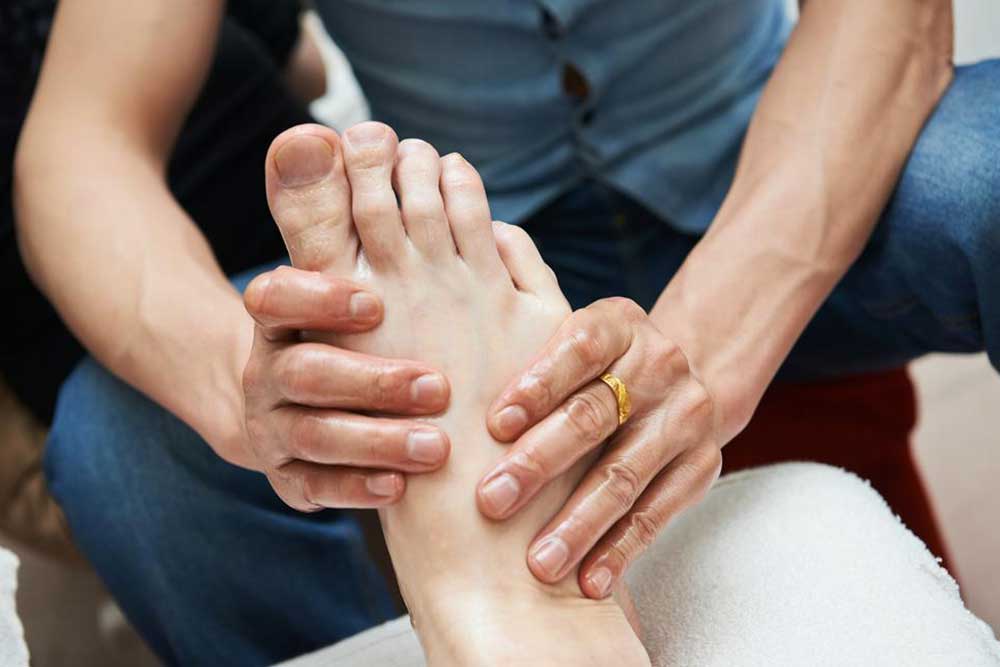Comprehensive Guide to Managing Rheumatoid Arthritis and Gout-Related Foot Pain
This comprehensive guide explores effective strategies for managing foot discomfort caused by rheumatoid arthritis and gout. It emphasizes the importance of accurate diagnosis, personalized treatment plans, lifestyle changes, dietary modifications, and medical interventions to prevent joint damage and protect vital organs. Understanding the differences between these conditions is crucial for effective management. The article also highlights the significance of early intervention, multidisciplinary approaches, and regular health monitoring. Ideal for patients seeking to improve their quality of life, this guide offers valuable insights into controlling inflammation, reducing flare-ups, and maintaining joint health over the long term.

Comprehensive Guide to Managing Rheumatoid Arthritis and Gout-Related Foot Pain
Foot discomfort stemming from rheumatoid arthritis and gout is a prevalent issue that affects many individuals worldwide. Although these two conditions have distinct causes, they often present with overlapping symptoms such as joint swelling, pain, and limited mobility, making accurate diagnosis and effective management crucial. Proper treatment strategies typically involve a combination of medications, lifestyle changes, and sometimes surgical interventions. Without appropriate care, both rheumatoid arthritis and gout can cause irreversible joint damage and pose risks to vital organs, including the kidneys and heart. It is not uncommon for individuals to suffer from both diseases simultaneously, which underscores the importance of seeking professional medical advice for tailored treatment plans.
Understanding the Differences Between Rheumatoid Arthritis and Gout
While rheumatoid arthritis and gout both involve joint inflammation, they have different underlying mechanisms and symptoms. Rheumatoid arthritis is a chronic autoimmune disorder where the body's immune system mistakenly attacks synovial membranes, leading to inflammation, joint swelling, and stiffness usually affecting multiple joints symmetrically. It commonly impacts smaller joints such as those in the hands and feet, with symptoms persisting over long periods. On the other hand, gout results from the accumulation of uric acid crystals within joints, predominantly affecting the big toe, ankles, and other small joints. Gout attacks often come suddenly, causing intense pain, redness, and swelling. Over time, untreated gout can also cause joint damage similar to rheumatoid arthritis, but the triggers and progression differ significantly.
Additionally, rheumatoid arthritis increases the risk of cardiovascular problems such as heart disease and stroke due to systemic inflammation. Gout, conversely, is more closely associated with kidney issues, as excess uric acid can lead to kidney stones and impaired renal function. Recognizing these differences is essential for clinicians and patients alike to develop appropriate treatment strategies.
Effective Treatments for Rheumatoid Arthritis and Gout-Related Foot Pain
Managing foot pain caused by rheumatoid arthritis and gout is highly dependent on the severity of symptoms, disease progression, and individual patient factors. An integrated approach combining medication, physical therapy, dietary adjustments, lifestyle modifications, and, in some cases, surgical intervention provides the most effective results. Timely diagnosis is critical to prevent long-term joint damage and avoid complications.
For rheumatoid arthritis, treatment typically includes disease-modifying anti-rheumatic drugs (DMARDs), biologic agents, and anti-inflammatory medications such as NSAIDs and corticosteroids to control inflammation and slow disease progression. Physical therapy plays a vital role in maintaining joint flexibility, improving mobility, and reducing stiffness. In advanced cases, joint replacement surgery may be recommended to restore function and alleviate pain.
Gout management involves controlling acute flare-ups with pain relievers like colchicine, NSAIDs, or corticosteroids. Long-term management focuses on uric acid reduction through medications such as allopurinol or febuxostat, which inhibit uric acid production. Uricosuric agents may be prescribed to promote uric acid excretion. Dietary changes are crucial, including reducing foods high in purines—such as red meats, shellfish, and organ meats—as well as limiting alcohol and sugary foods. Maintaining a healthy body weight further decreases the risk of gout attacks.
Integrated care from healthcare professionals is essential, especially for individuals suffering from both rheumatoid arthritis and gout, to formulate personalized treatment plans that address their unique needs and prevent disease progression.
Dietary vigilance is vital, especially for those with rheumatoid arthritis, to minimize the risk of developing gout. Patients should be advised on specific dietary restrictions and lifestyle habits that can significantly improve their quality of life. Regular monitoring and laboratory tests help track disease activity and adjust treatments accordingly. Adopting healthy habits, such as regular exercise, stress management, and avoiding smoking, can also contribute to better management of both conditions.
In summary, managing foot pain caused by rheumatoid arthritis and gout requires a comprehensive understanding of each condition, early intervention, and a multidisciplinary approach. Patients should collaborate with healthcare providers to develop personalized treatment plans that not only relieve symptoms but also preserve joint function and overall health in the long term.





